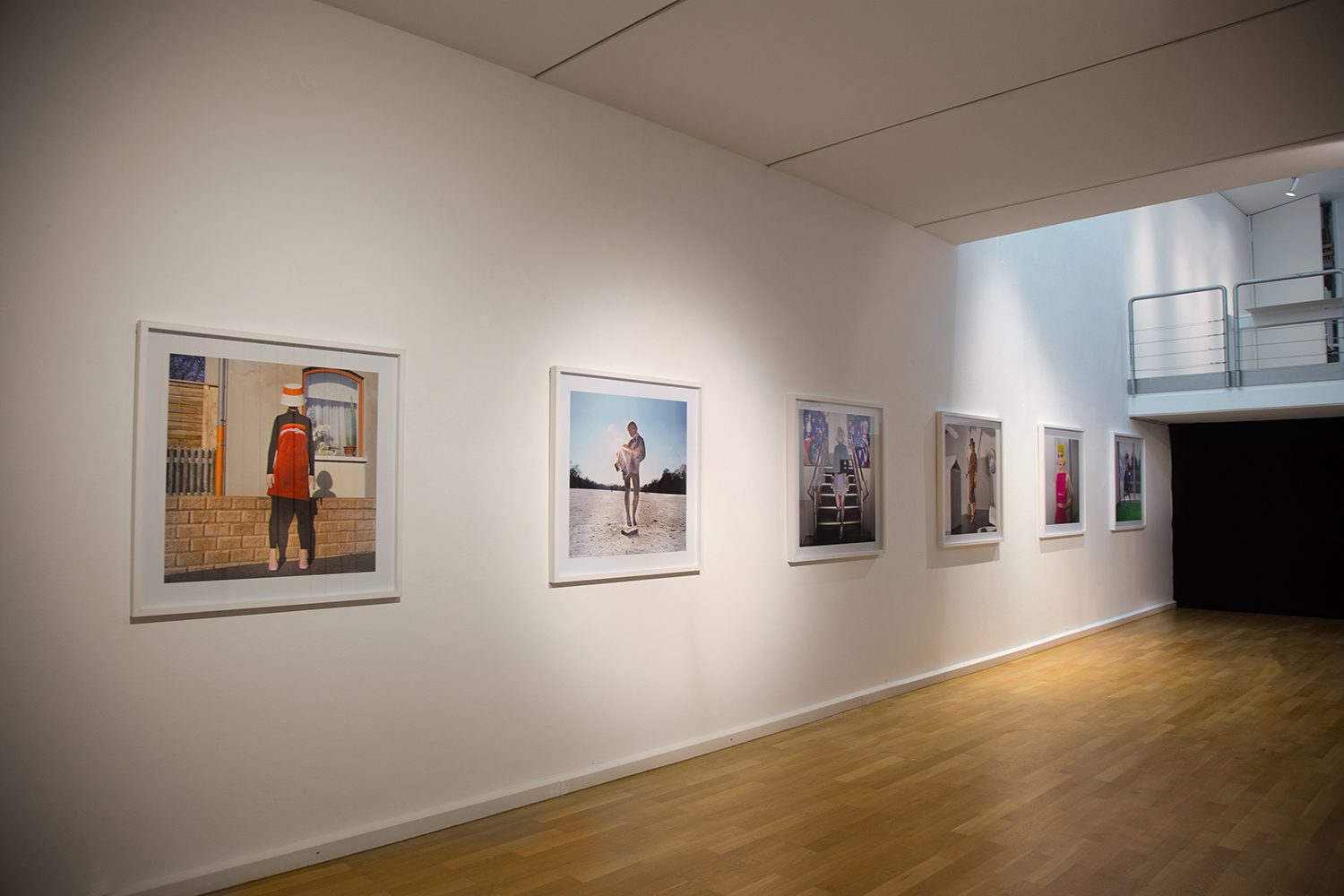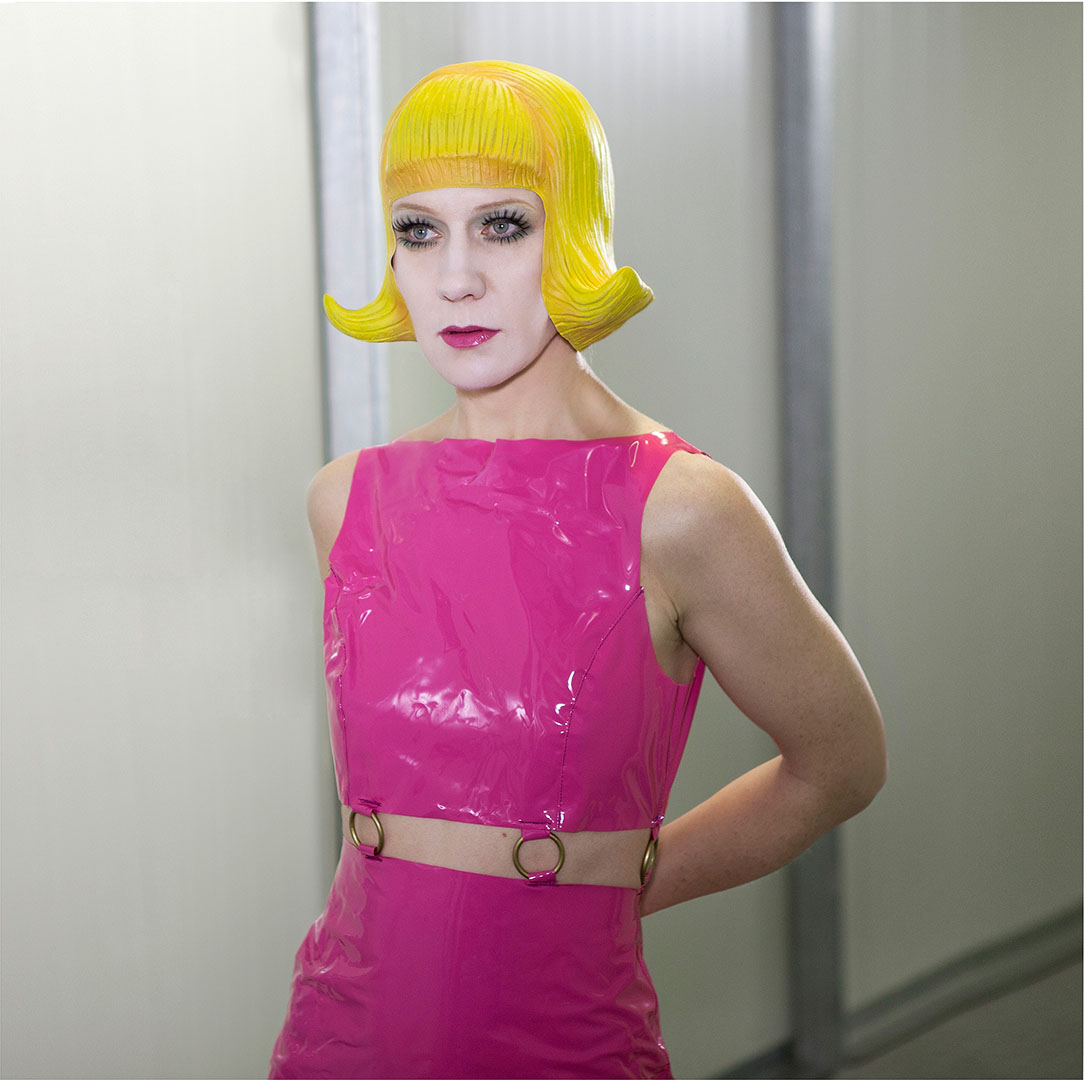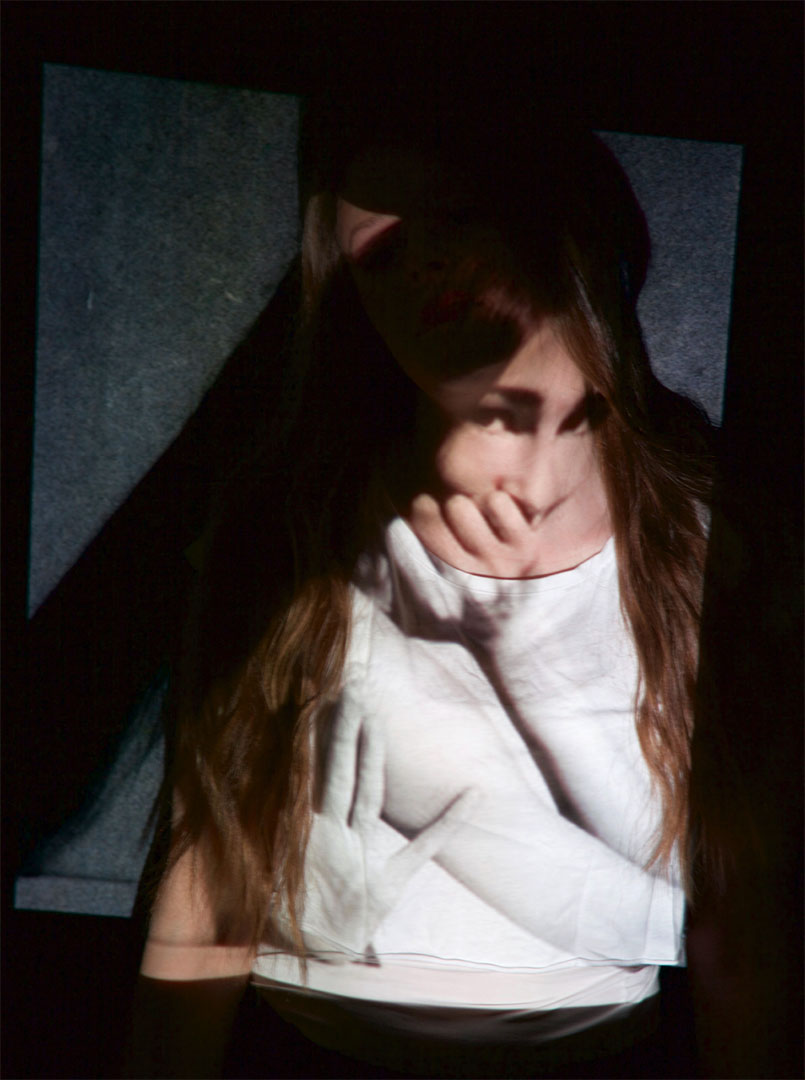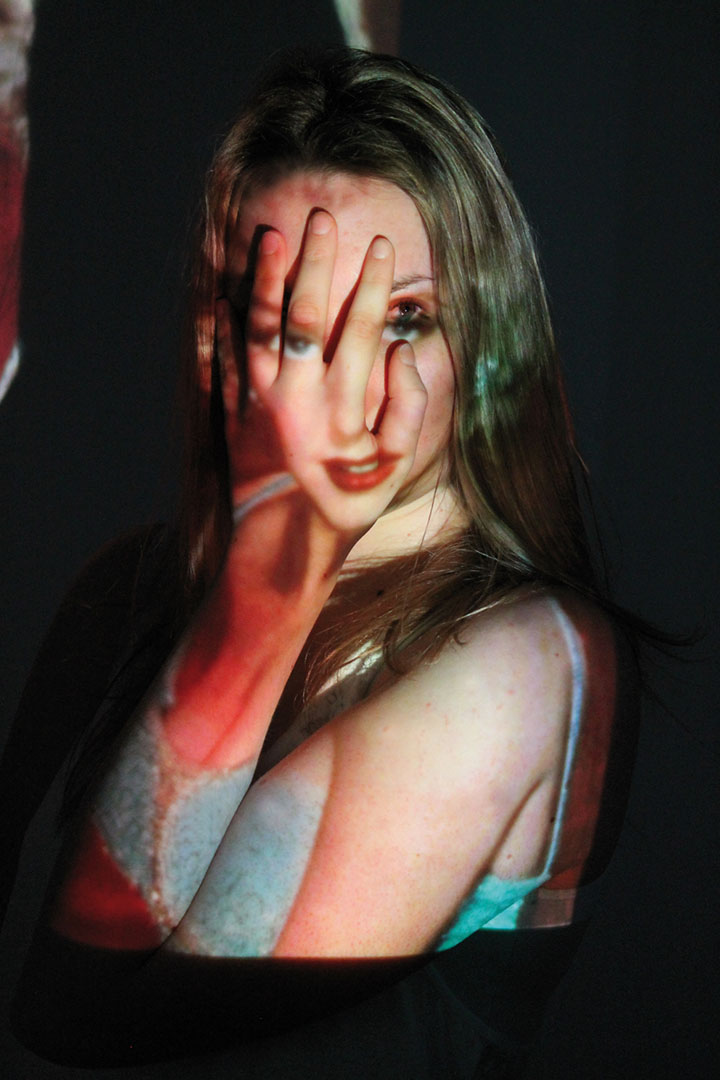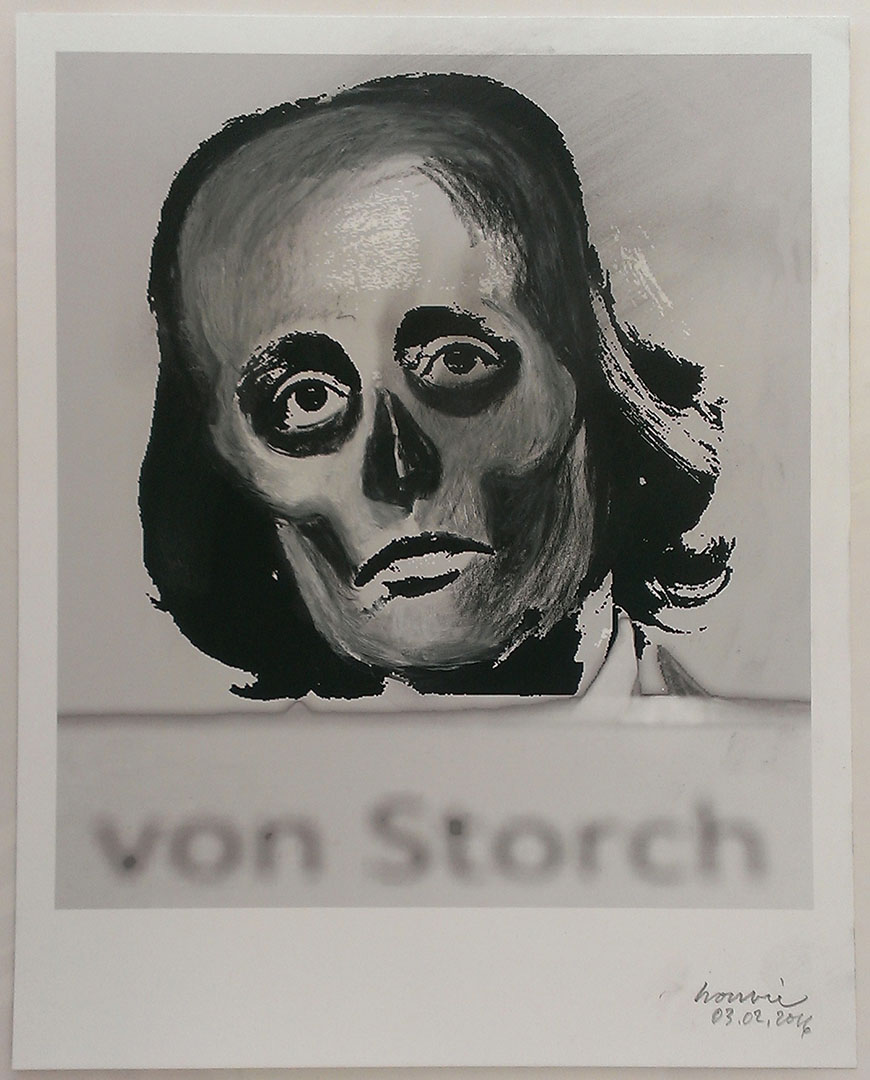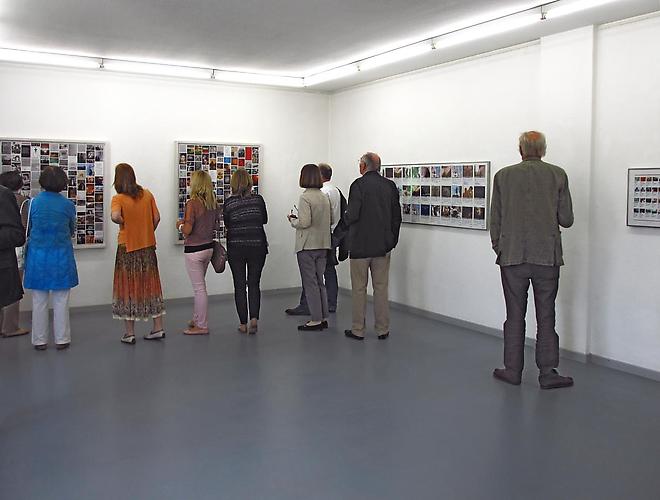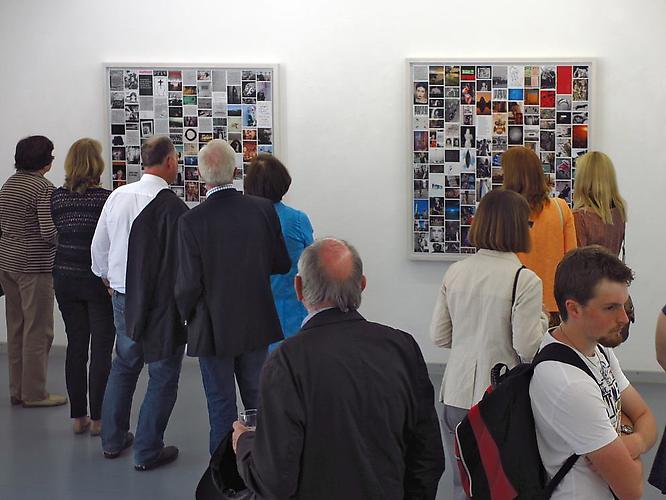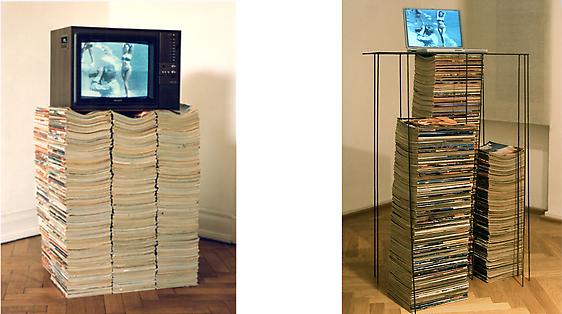Who Are Your #femaleheroes?
WHO ARE YOUR #FEMALEHEROES?
Johanna Reich, Catrine Val, Radenko Milak and Rudolf Bonvie
Curated by Jeanette Zwingenberger and Priska Pasquer
And a cabinet exhibition with female portraits of the 1920s and 1930s
June 24th – August 27th, 2016
Who are #femaleheroes?
Who would be your #femalehero?
How would you define a #femalehero?
Are heroes admired for their achievements?
Are they admired for their courage?
Does admiration play a key role in the definition?
Do you sympathize with #femaleheroes?
Are #femaleheroes leading personalities?
Who are the principal female characters of the art world?
Can you name living #femaleheroes?
Or can you only define heroes retrospectively?
…
Questions upon questions. But where are the answers? If you do an online search for female heroes – #femaleheroes – pretty much all you will find are “supergirls” and female action heroes from the world of comic books and manga. Aren’t there any other female heroes? Yes, there certainly are. Thanks to the internet, the forgotten heroines of history are gradually surfacing again. If you look for them, you will find them – for example in Wikipedia.
Who are these #femaleheroes and what makes them so heroic? What does the yearning for female heroes say about current social change? How present are #femaleheroes in the world we live in – or is it female anti-heroes who dominate our worldview? How does the current conflict between the invisibility or visibility of female personalities manifest itself? These questions are central to the exhibition Who are your #femaleheroes? at Galerie | PRISKA PASQUER.
The exhibition brings together works by JOHANNA REICH, CATRINE VAL, RADENKO MILAK and RUDOLF BONVIE. These works are supplemented by a cabinet exhibition featuring female portraits from the 1920s and 1930s.The various positions show the “image of women”, both from a public social viewpoint and an inner, personal perspective. The exhibition was curated by Jeanette Zwingenberger and Priska Pasquer.
JOHANNA REICH (*1977) works with the medium of video. Her performance work is characterized by strong painterly and media- reflexive components. In a dialogue with art- and film-historical models, she sounds out the relationship between static and moving images and explores the possibility of constructing reality with device- recorded and transported images.
In her participatory project Heroines, JOHANNA REICH asks girls about their role models. Following this, she projects a photo of the relevant icon on the bodies of the participants. Fusing analogue and digital facial characteristics in this way spawns hermaphrodite beings, often with grotesquely distorted features. The artist deliberately refrains from adjusting or harmonizing these digitally. In this way, the portraits convey the enormous tension and inner conflict between self-image and ideal that arise from the logic of comparison.
The project Resurface devotes itself to female artists of the 19th and 20th century who, although successful in their own lifetimes, have been all but forgotten today. Thanks to ongoing digitization, the archived works and biographies of these female artists are gradually resurfacing on the internet. Photographic portraits are uploaded and Wikipedia entries written. JOHANNA REICH produces Polaroids of the digital testimonies. In order to make the brief moment of “resurfacing” visible, she films the picture development process with a digital camera.
Today, people form their identities to a great extent on a digital level. Amazingly, our “society of singularities” is dominated by stereotypes and clichés. Although it professes to focus on all that is unique and incomparable, in reality it is characterized by conformity and uniformity. This is particularly apparent in the regimented orchestrations from the world of fashion. In her photo series FEMINIST and the parallel video Commodity Fetishism, CATRINE VAL (*1970) deconstructs the entrenched (visual) paragons of femininity. In doing so, she moves effortlessly between the spheres of fashion and performance, criticism and humor.
In her staged photographs, CATRINE VAL acts as a placeholder for a diversity of female personalities, all of whom somehow fall out of line. Kitted out with ludicrous accessories and posing in front of surreal- looking settings, her heroines meet the gaze of the general public with a mixture of fantasy and exuberance. “The endless reproduction of woman and her edgy efforts to present herself anew daily unmask the battle for supremacy between authenticity and theatricality. Who the woman actually is remains unanswered. She moves in utopian realms, but she sometimes also reaches for the stars. Phenomenists, that is what we are.” (CATRINE VAL)
What is the role of contemporary image production in the formation of our historical and cultural memory? This question is central to the works of RADENKO MILAK (*1980). In his watercolors and oil paintings, the Bosnian artist recreates templates from films, reports or press images that he finds on the internet. By painting the mass media images, he transforms them into unique specimens – singular works that stand out like islands in the flood of digital images, their materiality defying the onslaught of digitization.
By singling out individual images and holding them up to be examined again at length, RADENKO MILAK reflects on the familiar artistic scenarios. Specially for this exhibition, he has produced black-and- white watercolors of well-known artists such as Camille Claudel, Frida Kahlo, Diane Arbus and Georgia O’Keeffe. Each picture consists of two parts: a portrait of the artist and one of her works.
RADENKO MILAK has chosen motifs that are very familiar but couched in a new and strangely distorted interpretation. By recreating them as watercolors, he places photographic portraits of the authors on the same level as their own works. In this way, he comments on how women’s art is received, very frequently with a focus on their “life and work” rather than letting the work stand on its own terms.
RUDOLF BONVIE (*1947) is a politically active artist who explores the historical and cultural mechanisms and effects of media propaganda (communication with images). He is also regarded as one of Germany’s first ever media artists.The artist’s critical observations revolve mainly around three thematic issues: the growing narcissism in our society, the exuberant flood of images and the looming threat of nuclear disaster.
BONVIE’s work concerns itself with the question:What are today’s images of heroines and anti-heroines based on? In the tradition of political photomontage pioneer John Heartfield (1891-1968), he examines the idealizing self-presentation of radical female politicians. Accordingly, the head of German right-wing populist party AfD, Frauke Petry – never without an arrogant, ironic smile on her face – is given a facial tattoo in the form of a death’s head.The party’s vigorous deputy chairperson Beatrix von Storch fared no better: her ice-cold expression frozen into a rigid mask in the artist’s hands.
In addition to the exhibition Who are your #femaleheroes?, | PRISKA PASQUER is presenting a cabinet exhibition with photographic portraits of women from the 1920s and 1930s. This era was shaped by radical upheaval in the realms of politics, business, culture and society. Also affected was the image of women. At the same time, it gave rise to a new ideal of femininity as a confident, sporty “new woman” with short hair and casual clothing.
However, this independent, self-assured “new woman” was above all a media event. This “new photography”, which formulated an expanded, experimental view of the world, became the ideal medium for disseminating this image of the “new woman”.
The works on display range from Russian constructivists Gustav Klutsis (1895-1938) and Alexander Rodchenko (1891-1956) to German avant- garde artists such as August Sander (1876-1964) and Annelise Kretschmer (1903-1987) and futurist Adele Gloria (1910-1984).
Who are #femaleheroes?
Who would be your #femalehero?
How would you define a #femalehero?
Are heroes admired for their achievements?
Are they admired for their courage?
Does admiration play a key role in the definition?
Do you sympathize with #femaleheroes?
Are #femaleheroes leading personalities?
Who are the principal female characters of the art world?
Can you name living #femaleheroes?
Or can you only define heroes retrospectively?
…
Fragen über Fragen. Und die Antworten darauf? Macht man sich im Internet auf die Suche nach weiblichen Helden, nach #femaleheroes, findet man fast nur Supergirls und Female Action Heroes aus der Comic- und Mangawelt. Gibt es keine anderen Heldinnen? Doch, es gibt sie. Dank des Internets kommen die vergessenen Heldinnen der Geschichte allmählich zurück an die Oberfläche. Wer sucht, findet sie – zum Beispiel bei Wikipedia.
Wer sind diese #femaleheroes und was macht sie zu Heldinnen? Was sagt die Sehnsucht nach Heldinnen über den aktuellen gesellschaftlichen Wandel aus? Wie präsent sind #femaleheroes in der Gegenwart – oder dominieren Anti-Heldinnen unser Weltbild? Wie deklariert sich das gegenwärtige Spannungsfeld zwischen Unsichtbar- oder Sichtbarkeit weiblicher Persönlichkeiten? Dieser Fragenkomplex steht im Zentrum der Ausstellung Who are your #femaleheroes? in der Galerie | PRISKA PASQUER.
Die Ausstellung versammelt Arbeiten von JOHANNA REICH, CATRINE VAL, RADENKO MILAK und RUDOLF BONVIE. Sie wird ergänzt durch eine Kabinettausstellung mit weiblichen Porträts der 20er- und 30er-Jahre. Die unterschiedlichen Positionen zeigen das „Bild der Frau“ sowohl aus sozialgesellschaftlich-öffentlicher Perspektive als auch aus der inneren, persönlichen Wahrnehmung. Kuratiert wurde die Ausstellung von Jeanette Zwingenberger und Priska Pasquer.
JOHANNA REICH (*1977) arbeitet mit dem Medium Video. Ihre performativen Arbeiten zeichnen sich durch malerische und medienreflexive Komponenten aus. In Auseinandersetzung mit kunst- und filmhistorischen Vorbildern loten sie das Verhältnis von statischem und bewegtem Bild aus und untersuchen die Möglichkeit, Wirklichkeit im apparativ aufgezeichneten und transportierten Bild zu konstruieren.
In ihrem partizipatorischen Projekt Heroines fragt JOHANNA REICH junge Mädchen nach ihren Vorbildern. Anschließend projiziert sie ein Foto der genannten Ikone auf die Körper der Teilnehmerinnen. In der Verschmelzung von analogen und digitalen Gesichtsmerkmalen entstehen Zwittermenschen mit teilweise grotesk verzerrten Zügen. Diese werden von der Künstlerin bewusst nicht digital angeglichen oder harmonisiert. So vermitteln die Porträts die enorme Spannung und die inneren Konflikte zwischen Selbst- und Wunschbild, die sich aus der Logik des Vergleichens ergeben.
Das Projekt Resurface widmet sich Künstlerinnen des 19. und 20. Jahrhunderts, die zur ihren Lebzeiten erfolgreich waren, heute jedoch fast vergessen sind. Durch die fortschreitende Digitalisierung tauchen die in Archiven befindlichen Werke und Biografien dieser Künstlerinnen nach und nach im Internet wieder auf. Fotografische Porträts werden online gestellt, es entstehen Wikipedia-Einträge. JOHANNA REICH fertigt von den digitalen Zeugnissen Polaroids an. Um den kurzen Moment des „Resurface“, des Wiederauftauchens, sichtbar zu machen, filmt sie den Prozess der Bildentwicklung mit der Digitalkamera ab.
Identitätsbildung findet heute zu einem erheblichen Teil auf digitaler Ebene statt. Erstaunlicherweise wird unsere „Gesellschaft der Singularitäten“ von Stereotypen und Klischees beherrscht. Vorgeblich fokussiert auf das Einzigartige und Nicht-Vergleichbare, ist sie in Wirklichkeit gekennzeichnet von Nivellierung und Gleichförmigkeit. Besonders offensichtlich wird dies in den reglementierten Inszenierungen der Modewelt. In ihrer Fotoserie FEM!NIST und dem parallel entstandenen Video Commodity Fetishism dekonstruiert CATRINE VAL (*1970) festgefahrene (Bild)Muster von Weiblichkeit. Dabei bewegt sie sich fließend zwischen den Sphären der Mode und Performance, Kritik und Humor.
In ihren inszenierten Fotografien agiert CATRINE VAL als Platzhalterin einer Vielfalt weiblicher Persönlichkeiten, die alle irgendwie aus der Rolle fallen. Ausstaffiert mit den aberwitzigsten Accessoires und posierend vor surreal anmutenden Settings, stellen sich ihre Heldinnen mit Fantasie und Übermut den Blicken der Öffentlichkeit. „Die Vervielfältigung der Frau und ihr verkrampftes Spiel mit der täglich neuen Selbstinszenierung entlarven das Kräftemessen zwischen Authentizität und Inszenierung. Es bleibt offen, wer die Frau eigentlich ist. Sie bewegt sich im Reich der Utopie, aber manchmal greift sie nach den Sternen. Phänomenistinnen – so sind wir.“ (CATRINE VAL)
Welche Rolle spielt die zeitgenössische Bildproduktion bei der Herausbildung unseres historischen und kulturellen Gedächtnisses? Diese Frage steht im Zentrum des Werks von RADENKO MILAK (*1980). In seinen Aquarellen und Ölgemälden verarbeitet der bosnische Künstler Vorlagen aus Filmen, Reportagen oder Pressebildern, die er im Internet findet. In dem malerischen Übersetzungsprozess verwandelt er die massenhaft reproduzierten medialen Bilder in Unikate – singuläre Werke, die sich wie Inseln aus der digitalen Bilderflut herausheben und sich in ihrer Materialität der fortschreitenden Digitalisierung widersetzen.
Indem RADENKO MILAK Einzelbilder herausgreift und zu erneutem, längerem Anschauen bereitstellt, reflektiert er die vertrauten bildnerischen Szenarien. Eigens für diese Ausstellung hat er Schwarz-Weiß-Aquarelle bekannter Künstlerinnen wie Camille Claudel, Frida Kahlo, Diane Arbus oder Georgia O’Keeffe angefertigt. Es sind Doppelbildnisse, jeweils bestehend aus einem Porträt und einem Werk der Künstlerin.
RADENKO MILAK wählte sehr bekannte Motive aus, die jedoch in der neuen Interpretation seltsam verfremdet erscheinen. Durch die Übertragung ins Aquarell bringt er fotografische Porträts und eigene Werke der Künstlerinnen auf eine Ebene. Damit kommentiert er die Rezeption von Kunst von Frauen, bei der es sehr oft mehr um die Mischung von „Leben und Werk“ als um das Werk selber geht.
RUDOLF BONVIE (*1947) ist ein politisch engagierter Künstler, der sich mit den historisch-kulturellen Mechanismen und Auswirkungen der Medienpropaganda (Kommunikation durch Bilder) auseinandersetzt. Er gilt zudem als einer der ersten Medienkünstler Deutschlands. Im Zentrum seiner kritischen Beobachtung stehen vor allem drei Themenkomplexe: Der zunehmende Narzissmus in unserer Gesellschaft, die überbordende Bilderflut und die drohende Gefahr von Nuklearkatastrophen.
BONVIE’s Arbeiten befassen sich mit der Frage: Worauf beruht das heutige Bild von HeldInnen beziehungsweise Anti-HeldInnen? In der Tradition von John Heartfield (1891-1968), dem Pionier der politischen Fotomontage, nimmt er die idealisierende Selbstdarstellung radikaler Politikerinnen unter die Lupe. So verpasste er der stets überheblich-ironisch lächelnden Chefin der AfD, Frauke Petry, ein Gesichts-Tattoo in Form eines Totenkopfes. Der engagiert auftretenden stellvertretenden Bundesvorsitzenden Beatrix von Storch ging es nicht besser: Ihr eiskalter Blick gefriert in seinem künstlerischem Zugriff zur starren Maske.
Ergänzend zu der Ausstellung Who are your #femaleheroes? präsentiert | PRISKA PASQUER eine Kabinettausstellung mit fotografischen Portraits von Frauen aus den 20er- und 30er-Jahren. Diese Epoche war von radikalen Umbrüchen in Politik, Wirtschaft, Kultur und Gesellschaft geprägt. Davon betroffen war auch das Bild der Frau. Als neues Ideal der Weiblichkeit galt die selbstwusste, sportliche „Neue Frau“ mit kurzen Haaren und legerer Kleidung.
Dabei war diese selbständigen und unabhängige „Neue Frau“ vor allem ein Medienereignis. Die Fotografie, die unter dem Schlagwort der „Neuen Fotografie“ einen erweiterten, experimentellen Blick auf die Welt formulierte, wurde zum idealen Medium der Verbreitung dieses Images der „Neuen Frau“.
Die Bandbreite der ausgestellten Arbeiten reicht von den russischen Konstruktivisten Gustav Klutsis (1895-1938) und Alexander Rodtchenko (1891-1956) über deutsche Avantgardekünstler wie August Sander (1876-1964) und Annelise Kretschmer (1903-1987) bis hin zur Futuristin Adele Gloria (1910-1984).






